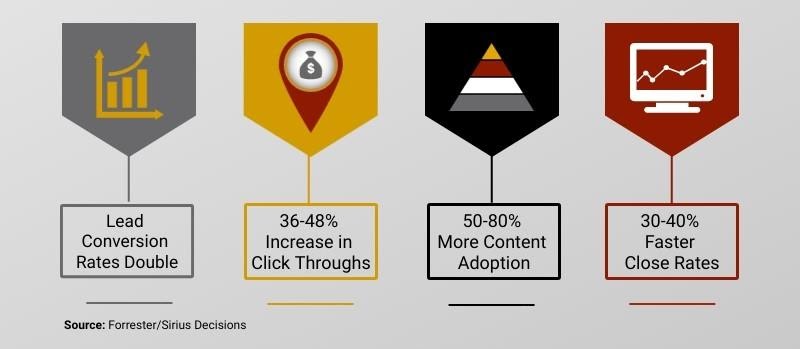When I joined an ecommerce company as CMO in early 2000, everyone was trying to cash in on the Internet explosion. Pre-revenue start-ups were enjoying ridiculous valuations, and this company was a step ahead of all of them, leveraging a decade of experience building similar solutions for mainframe computers.
Those first few months were every marketer’s dream. A constant stream of tradeshows attracted buyers who had prioritized investments like ours. We had a unique message and made sure it was memorable, distributing little purple cow tchotchkes to everyone who saw our demo. Sure, a few competitors could enable B2B ecommerce, but our prospects would have a way to remember that we “moooved cows” (or any complex product) at Internet speeds.
We were exceeding every goal, generating so many qualified leads that our salespeople struggled to keep up.
The perils of ignoring product-market fit
Yet by the end of that year, our company was out of business. And unlike a lot of Internet companies that crashed during the “dot com” bubble, our failure had nothing to do with overspending.
We failed because our solution couldn’t deliver the benefits we had promoted. Our first customer installations revealed the severity of the issue – the database we relied upon for our mainframe solutions couldn’t respond at the speeds required by ecommerce customers. Our fate was sealed when one account sued us, taking ownership of our intellectual property in a last-ditch attempt to save their jobs.
You could argue that our untimely end was a product problem, and that our marketing team did a great job. In fact, we had earned so much attention that our demise was big news. On one social media platform, people were turning our purple cow tchotchkes upside down, standing them on their heads in recognition of our inability to move anything at all.
Marketing needs to understand the entire buying journey
Fortunately, very few marketers have led marketing efforts that end this badly.
Yet marketers often build demand with buyers who are a bad match for their company’s solutions. The consequences are devastating, first for the salespeople who must engage in prolonged battles for opportunities that will probably never close.
Worse yet are the customers who choose you to deliver a solution that doesn’t meet their needs. While you may avoid a deadly lawsuit, their problems will consume your company’s resources, and you can be sure that every one of their peers will know about the debacle.
Two of our recent buying decision studies revealed this issue. When we interviewed buyers about the early stages of their journeys, buyers described the benefits our clients are promoting. Their companies are perceived as market leaders in their respective domains, and the marketing teams are generating a high volume of leads with the right job titles in market segments they hope to win.
The bad news only emerges when we study the later stages of buyer’s journey, at the critical point when prospective customers investigate the functionality delivered by different providers. Buyers who didn’t like the answers about features or capabilities chose the status quo or a competitor.
Prove your benefits with features that matter to buyers
An adage dating back to the 1960’s tells marketers that “customers buy holes, not drills.” Sixty years later, most marketers still believe that buyers want to hear benefits, not features.
Times have changed, and today’s educated buyers don’t believe our marketing promises. They are not impressed when we assure them that our drills create the best holes.
Buyers also don’t believe us when we say that our solutions will increase customer satisfaction, decrease costs, or grow their business.
Buyers want to hear about benefits, but that’s just the starting point for detailed questions that clarify our ability to deliver that benefit. Our carefully crafted headlines about ease of use might get the buyer’s attention, but only when we are ready to explain what we can do to make this easy for someone like them.
Here’s a verbatim quote from a buyer we recently interviewed:
“We want a provider who can say, ‘We know that each customer or each node in the network might have a different kind of interface. As long as you can provide a data file that is updated at some interval, we’ll be able to translate that file into something that can be read into our cloud database and relay it back to you.’ It’s the provider proving that they are able to get the IT infrastructure working and reliable, and that they will manage that on the cloud side versus us managing it on the local database. That’s what really gives me the comfort that we want to move forward with them.”
Qualified buyers ask the questions that align with your answers
Today’s educated buyers want to understand the unique features of your drill before they will trust that it is the best way to create the holes they envision.
This means that your company must …
- Understand the buyer’s questions and be prepared to deliver a concise, consistent, and satisfying answer
- Segment the market with insight into the capabilities their buyers expect, targeting those buyers who will see a close fit for their needs
- Be skilled at identifying opportunities that they should not pursue
To achieve these goals, it’s not enough for drill manufacturers to profile the professional carpenter vs the homeowner buyer persona, you need to know how well your product fits the needs of these buyers.
If buyers have different questions or evaluate different capabilities, that alone requires you to identify and clarify separate personas. Sales and marketing needs to know that the professional carpenter has different questions about drills than the homeowner, for example. This will actually result in fewer buyer personas that will be 100% actionable, because they are purpose-built to show your teams how to be useful to those prospective customers.
Gain insight into your product-market fit
It’s been close to two decades since I led that ecommerce company’s marketing team, but I can still recall our customer’s quavering voice when he told us he had been fired, and that it was entirely our fault. I was horrified and vowed to do everything I could to change the thinking about what it means to know your buyer.
The easiest place to start is by spending quality time with your product manager –they’ll be happy to give you a primer on what your solution can and cannot do. Then commit to understanding your buyer’s questions, at every step in their journey, before you define your buyer personas or marketing strategy.
If you want to know how to conduct interviews with your buyers, read my Buyer Personas book or attend our online Buyer Persona Masterclass. Or contact us, we would be happy to interview buyers and reveal everything you need to know about their buying decisions.





